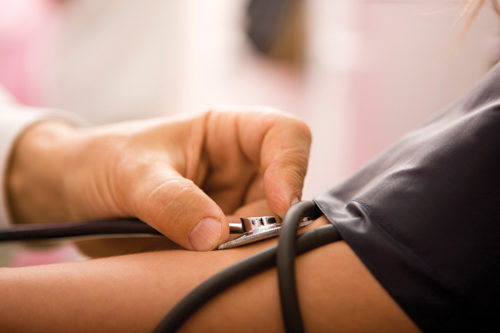Part Two of a Five-Part Series on Heart Health
Whether it’s excess salt intake or a bad traffic jam, there’s always something that threatens to raise one’s blood pressure. No matter how those with high blood pressure (HBP) are driven to this state (and there are 50 million or so examples in the United States [1]), it doesn’t bode well for their long-term health. HBP is at once a tell-tale sign of heart or other issues in the present moment, and a harbinger of cardiovascular and other serious complications down the line.
Let’s find out from those who know exactly why blood pressure, otherwise known as hypertension, matters for our health, and how the pressure gets ramped up in the first place. Then, we’ll see about bringing things down a notch through natural high blood pressure remedies, and learn just how achievable that might be in a majority of cases.
High-Pressure Situations
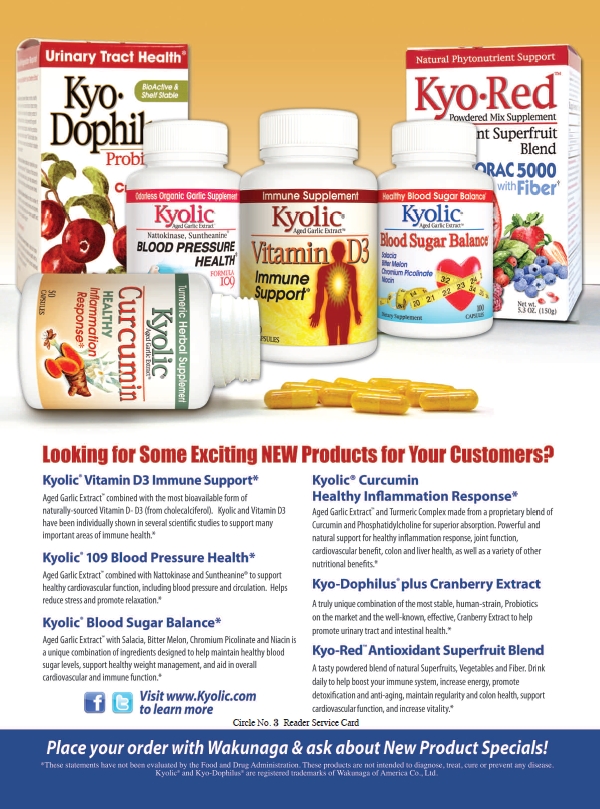 That 50-million-cases-of-HBP stat comes courtesy of the National Heart Lung and Blood Institute, and is brought to our attention by Jolie Root, LPN, LNC, nutritionist and educator for Carlson Laboratories, Arlington Heights, IL. She also commences a discussion of the deadly significance of HBP. According to Root, each increase in blood pressure in increments of 20 (systolic)/10 (diastolic) mmHG doubles the risk of cardiovascular disease, starting with 115/75 mmHg (millimeters of mercury are the pressure units used to account for blood pressure). “On average, lowering blood pressure is associated with a 35–40% reduction in incidence of stroke, a 20-25% reduction in incidence of heart attack and a 50% reduction in risk of heart failure,” she says. Putting the risk more starkly is one study that traces approximately 400,000 annual deaths in the United States to issues stemming from HBP (2).
That 50-million-cases-of-HBP stat comes courtesy of the National Heart Lung and Blood Institute, and is brought to our attention by Jolie Root, LPN, LNC, nutritionist and educator for Carlson Laboratories, Arlington Heights, IL. She also commences a discussion of the deadly significance of HBP. According to Root, each increase in blood pressure in increments of 20 (systolic)/10 (diastolic) mmHG doubles the risk of cardiovascular disease, starting with 115/75 mmHg (millimeters of mercury are the pressure units used to account for blood pressure). “On average, lowering blood pressure is associated with a 35–40% reduction in incidence of stroke, a 20-25% reduction in incidence of heart attack and a 50% reduction in risk of heart failure,” she says. Putting the risk more starkly is one study that traces approximately 400,000 annual deaths in the United States to issues stemming from HBP (2).
It is truly tough to overstate the importance and relevance of blood pressure, according to Jonny Bowden, Ph.D., CNS, member of the scientific advisory board of Barlean’s, Ferndale, WA. He describes blood pressure as one of, if not the most important risk factors for heart disease, more so than cholesterol. Combine this with its frequent lack of symptoms, and we have a dangerous recipe, where the first symptom of HBP comes in the form of a heart attack for many individuals. “Up to 95% of HBP cases have a cause that’s basically unknown—this type of blood pressure is called ‘essential hypertension,’” says Bowden.
Essential, or primary hypertension, where the cause can be anything and everything, accounts for 90% of cases seen in the United States, according to Trisha Sugarek MacDonald, B.S., M.S., director of R&D and national educator for Bluebonnet Nutrition Corporation, Sugar Land, TX. Secondary hypertension occurs as a side effect of some other health issue, including renal or cardiovascular disease, or endocrine or neurogenic disorders, such as compression of cranial nerves, she says, adding, “Primary hypertension, although the cause is unknown, is more than likely the result of heredity, and lifestyle choices and factors.”
Sugarek MacDonald explains that blood pressure, in and of itself, can be defined as cardiac output multiplied by peripheral resistance. In other words, it’s a combination of the blood that’s being pumped, and the fight that blood vessel walls put up against this blood flow. Indeed, “HBP most commonly develops from arteries losing their ability to ‘give way’ when pressure builds up,” says Frank Schönlau, Ph.D., scientific director at Horphag Research, Hoboken, NJ, North American distributor of French maritime pine bark extract ingredient Pycnogenol. He explains that the cells that line blood vessel walls, known as endothelial cells, contain sensors for “shear stress,” a physics term for parallel pressure. These sensors, when functioning normally, indicate to the body that significant blood flow is occurring in specific, localized blood vessels. The endothelial cells then regulate the production of nitric oxide, which relaxes arteries accordingly.
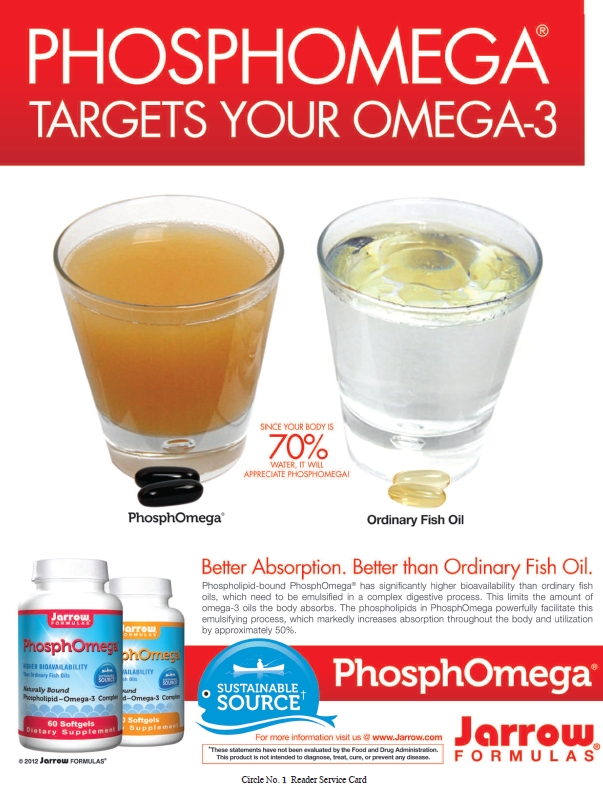 Dilated blood vessels relieve arterial pressure, in what Schönlau describes as a very effective autonomous self-regulation system. When high fat loads, oxidative stress and cholesterol deposits combine to suppress endothelial function, hypertension can occur. Supplements that help to restore this nitric oxide pathway may, as we’ll see later, improve blood pressure and cardiovascular health in general, according to Schönlau.
Dilated blood vessels relieve arterial pressure, in what Schönlau describes as a very effective autonomous self-regulation system. When high fat loads, oxidative stress and cholesterol deposits combine to suppress endothelial function, hypertension can occur. Supplements that help to restore this nitric oxide pathway may, as we’ll see later, improve blood pressure and cardiovascular health in general, according to Schönlau.
HBP is a potential lead in to more than just cardiovascular disease. “HBP, or what we can call high arterial pressure or arterial hypertension, is considered a major risk factor for stroke, heart attacks, aortic aneurysms and even chronic kidney diseases,” says Anurag Pande, Ph.D., vice president of scientific affairs at Sabinsa Corporation, East Windsor, NJ. Chronic HBP enlists the heart to pump blood harder than normal so that it can continue to circulate, Pande explains. This extra stress on the heart is what makes HBP a major risk factor for cardiovascular illness.
There are many lifestyle and indirect factors that lead to HBP, and these include smoking, being overweight, stress and lack of exercise, according to Bowden. Michael T. Murray, N.D., director of product development and education for Natural Factors, Everett, WA, offers up the opinion that weight loss is often the key nutritional therapy for HBP. He cites the Encyclopedia of Natural Medicine as a resource for this perspective, a book he coauthored, and in which an entire chapter is devoted to HBP. The 3rd edition of the Encyclopedia will be published this month.
David Winston, RH (AHG), president of Herbalist & Alchemist, Washington, NJ, points out one more important correlation, related to being overweight, that may go unnoticed. “Insulin resistance and metabolic syndrome are both risk factors for elevated blood pressure. You find people in their 30s and 40s whose blood pressures slowly increase every year—that’s often associated with metabolic syndrome,” he says.
In fact, the number of years one has HBP is an important factor in assessing risk, according to Eric Ding, Ph.D., nutritionist and epidemiological researcher at Harvard, whose expertise includes cardiovascular health. He notes that blood pressure readings are notoriously harder to pull down with age. But if individuals can find success in lowering their blood pressure, then the lower they can get it within a healthy range, the better.
In Ding’s own depiction of how HBP and cardiovascular disease develop, artery walls “become less elastic, and therefore more conducive to blood clots.” He also cites HBP as a cause of kidney disease that rivals diabetes. But the major long-term risk, as others have stated, is an overworked heart. Ding says, “If your blood pressure is always high, your heart muscle must be extremely powerful to keep pumping. What then happens is, your heart enlarges, and it’s called congestive heart failure. The major cause of congestive heart failure is HBP.”
Chickens, eggs and blood pressure. The 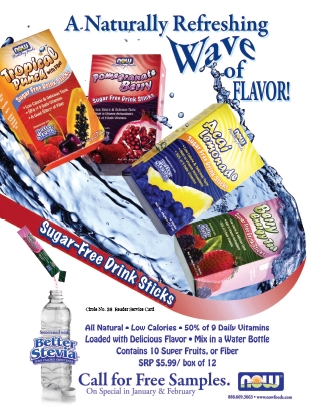 question of what comes first, HBP or the health problems it is linked with, has no simple answer. “It may come as a surprise, but HBP (i.e., hypertension) can be both a cause and/or symptom of an underlying disease!” says Sugarek MacDonald. It is often a matter of which perspective is more helpful. For example, HBP, as we’ve learned, is correlated as a cause with both cardiovascular disease and kidney disease (the kidneys can become stressed through HBP, sustaining permanent damage from blood pushing through them at high pressure over long time periods). But, Sugarek MacDonald notes, it is also a well-known symptom, or consequence when it comes to kidney disease.
question of what comes first, HBP or the health problems it is linked with, has no simple answer. “It may come as a surprise, but HBP (i.e., hypertension) can be both a cause and/or symptom of an underlying disease!” says Sugarek MacDonald. It is often a matter of which perspective is more helpful. For example, HBP, as we’ve learned, is correlated as a cause with both cardiovascular disease and kidney disease (the kidneys can become stressed through HBP, sustaining permanent damage from blood pushing through them at high pressure over long time periods). But, Sugarek MacDonald notes, it is also a well-known symptom, or consequence when it comes to kidney disease.
Pande adds his opinion, saying, “From the medical point of view, HBP is both symptom and cause.” He elaborates that as a symptom, blood pressure is a parameter which indicates overall cardiovascular health or fitness. HBP can, meanwhile, be the cause of other conditions like headaches and vertigo. In addition to kidney failure, chronic HBP can contribute to dementia, eye damage and erectile dysfunction, according to Jay Levy, director of sales for Wakunaga of America, Mission Viejo, CA. Bowden adds, finally, that as a symptom, HBP can bring an individual’s or his/her doctor’s attention to lifestyle issues such as smoking or excess stress.
Blood Pressure: Come on Down!
Your customers will feel just like the jubilant contestants on The Price is Right, if, that is, they can successfully manage their blood pressure with the aid of natural supplements. Your understanding of their options will go a long way toward making them winners, but keep in mind that no medical advice can be given, a particularly important fact when considering those that need to discuss medication interactions with their doctors. The problems stemming from hypotension, or low blood pressure, are serious, so doubling-down on blood pressure regulation is not something to meddle with without expertise.
It will come as no surprise to many that omega-3 fatty acids are touted for their potential to support a healthy blood pressure. “The role of omega-3s in blood pressure control and heart disease is pretty much undisputed,” says Bowden. He refers to Mark Houston, M.D., and his book, What Your Doctor May Not Tell You About Hypertension, for the claims that omega-3s can benefit or reduce blood pressure, inflammation, blood platelets clumping, irregular heartbeat and coronary heart disease in general. He also points to Harvard professor Andrew Stoll, M.D.’s book, The Omega-3 Connection, as well as the Pub Med Web site for more supporting research linking omega-3s and blood pressure.
Sugarek MacDonald offers some specific expectations regarding this omega-3 connection. “Typically, research has shown a significant reduction of blood pressure values (i.e., average reduction of systolic pressure ~8 mmHg and diastolic pressure ~6 mmHg) when taking 1 to 3 grams of EPA-rich fish oil daily.”
In addition to omega-3s, Sugarek MacDonald tabs vitamin D as well as other vitamins and nutrients for blood pressure support. “Nutritional supplements that may help maintain healthy blood pressure levels in the normal range are the minerals potassium, magnesium and calcium, because of their potential in affecting the ion channels that gate all ions and cations,” she says. These channels are important mechanisms in the body’s efforts to regulate blood pressure.
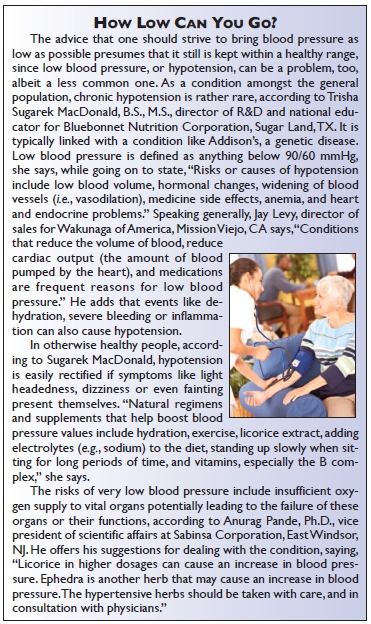 Specifically speaking to magnesium, she states, “Epidemiological, experimental and clinical studies suggest that magnesium deficiency (i.e., hypomagnesemia) plays a role in the pathogenesis of hypertension.” An inverse association between serum magnesium levels and blood pressure has been found in population studies, she adds.
Specifically speaking to magnesium, she states, “Epidemiological, experimental and clinical studies suggest that magnesium deficiency (i.e., hypomagnesemia) plays a role in the pathogenesis of hypertension.” An inverse association between serum magnesium levels and blood pressure has been found in population studies, she adds.
A popular supplement for heart health has some blood pressure-specific support, according to Angelica S. Vrablic, Ph.D., manager of nutrition research for Solgar Vitamin and Herb, Leonia, NJ. “One of the better studied supplements for maintaining blood pressure already within the normal range is CoQ10,” she says. The ubiquinol form of CoQ10 has been found, at potencies of 100–200 mg per day, to counteract the oxidative stress that can constrict blood vessels, reduce nitric oxide levels, and thus elevate blood pressure. This can mean an average reduction of 17 mmHg diastolic and 10 mmHg systolic pressure, according to Sugarek MacDonald.
Murray’s Encyclopedia details the benefits of arginine for blood pressure. This amino acid plays a key role in nitric oxide production, and may produce meaningful decreases in systolic blood pressure, particularly, research suggests, in younger people with hypertension. Another entry in the chapter on HBP discusses naturally occurring peptides that inhibit angiotensin-converting enzyme (ACE). Part of the renin/angiotensin/aldosterone blood pressure regulation system, angiotensin causes blood vessel constriction and instructs the kidneys to retain sodium. The Encyclopedia says that for blood pressure benefit, the best studied among these natural peptides is derived from the muscle of the bonito fish, a type of tuna.
Though it is anathema to vampires, garlic is a well-studied boon to heart health. “Several clinical studies using aged garlic extract (AGE) have been shown to reduce multiple risk factors of heart disease, including elevated blood pressure, cholesterol, homocysteine and atherosclerosis,” says Levy. On the blood pressure front, clinical studies performed at the Los Angeles Biomedical Research Institute at Harbor-UCLA Medical Center found that AGE may reduce it significantly, according to him.
Another study saw 50 patients with uncontrolled hypertension receive either AGE or a placebo daily for 12 weeks (3). “At the end of the study, those in the AGE group had an average drop in their systolic blood pressure of 10.2 mmHg compared to the placebo group,” Levy says. The key to AGE’s effectiveness, he adds, is a highly bio-available compound in the herb known as S-allylcysteine. To further illustrate garlic’s benefits, Pande cites a meta-analysis from 2008 showing that garlic preparations were significantly better than placebo at reducing blood pressure in those with HBP, according to various research.
Nattokinase is an enzyme derived from fermented soybeans that brings blood-thinning capabilities to the table. In the mid-1990s, Levy says, Japanese researchers at Miyazaki Medical College and Kurashiki University looked into nattokinase’s effect on blood pressure. Their experiments revealed that nattokinase naturally inhibits ACE, kicking out one leg of the renin/angiotensin/aldosterone system that can elevate blood pressure when over-stimulated.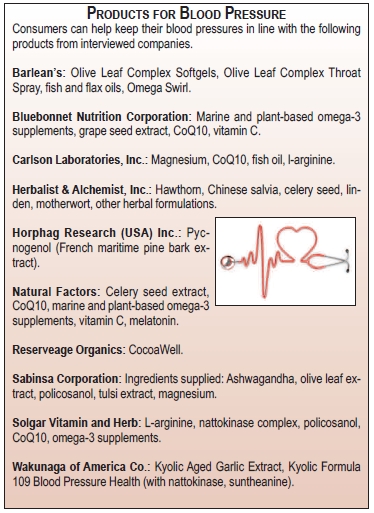
Years later, another research team reexamined this fermented soy product. “In a trial of 73 individuals with borderline hypertension, they confirmed that nattokinase reduced both systolic blood pressure and diastolic blood pressure—and it did so in just eight weeks,” Levy says. Japanese researchers have conducted preclinical studies showing that L-theanine, too, can reduce blood pressure in a dose-dependent manner in those with elevated blood pressure. Levy emphasizes that subjects with normal blood pressure saw no change when taking L-theanine.
“Certain herbs,” Levy also notes, “such as hawthorn berry and cayenne pepper have been shown to benefit circulation.” Winston knows quite well the scope of herbal high blood pressure remedies. “Herbal remedies have been used for hundreds of years, and in some cases millennia, to lower blood pressure,” he says, before beginning to categorize and describe some of these herbs.
“Mild” herbs with blood pressure-lowering effects include ju hua or Chinese chrysanthemum flower, motherwort, linden flower (suitable for tea) and hibiscus (another tea herb). Winston concurs with Levy that hawthorn is a bona fide cardiovascular tonic, but says that its effect on blood pressure is mild. Eucommia bark and Dan shen (Salvia miltiorrhiza), both Chinese herbs, are also good for blood pressure, according to Winston. European mistletoe may also be of benefit, but he cautions that those taking mistletoe may initially have a slight blood pressure increase before seeing it begin to drop after the course of several weeks. It should not be taken in combination with pharmaceutical blood pressure mediations, because it could cause a blood pressure increase that will stick around, Winston explains. Other “strong” herbs for blood pressure exist such as Rauwolfia, “but these also present more significant risks for adverse effects and should only be used while under the care of a knowledgeable practitioner,” he says.
Diuretics are an important option, too. Winston cites as background the landmark ALLHAT study from 2002, which compared the most commonly used blood pressure pharmaceuticals (beta blockers, calcium channel blockers and ace inhibitors) against diuretics such as Lasix or hydrochlorothiazide. It was found that these diuretics matched up well in performance with the pharmaceuticals, at a lower cost and lower risk of adverse effects. “Herbal diuretics can be just useful for lowering blood pressure. One of the first that comes to mind is dandelion leaf,” Winston says.
In addition, others such as parsley leaf, celery seed and golden rod provide the same fluid-reducing benefits, and work well in combination with herbs that affect blood pressure more directly, according to Winston. Pande adds that decaffeinated green tea is an effective aid for blood pressure, as are guggulipid, policosanol and tulsi.
The main thrust behind the effectiveness of these and other herbs may be the aid they offer in coping with stress, a major influence on HBP. In fact, a further category of herbs described by Winston are called nervines. These herbs, including motherwort and linden flower, are calming, and may be effective for stress-induced hypertension. According to Winston, they may specifically help eliminate the effect of “whitecoat hypertension.” This is the phenomenon of HBP readings that occur largely due to anxiety from visiting the doctor or being examined.
“The autonomic and sympathetic nervous systems play an important role in the regulation of blood pressure. Their role in short-term regulation of blood pressure is well known,” says Pande, who continues, “Calming agents such as tulsi, which have anti-anxiety effects, can be helpful in lowering stress-related increases in blood pressure. Adaptogenic herbs such as Ashwagandha may also increase the resistance toward stressful conditions and help in adaptive responses to stress.”
Stress is a normal part of life, Levy argues. “But too much stress and chronic stress can lead to heart disease, including HBP, chest pains or irregular heartbeats,” he says, recommending noted stress relievers like vitamins B1, B6 and B12.
New connections. Where a health factor as critical as blood pressure is concerned, one can count on new research being pursued left and right, and the benefits of previously unused or underused natural supplements are often revealed.
Four supplements are at the top of Bowden’s list for supporting blood pressure in a healthy range, and omega-3s, cocoa flavanols (more on these in a moment) and magnesium are the first three. “Fourth is a newcomer to the list, which has been shown in some very good research to be effective at lowering blood pressure: olive leaf complex,” he says. Olive leaf is included among the “strong” herbs that Winston cites, and it’s one that may need some education done on its behalf. “Many people think of olive leaf as an antibacterial. Interestingly enough, the evidence for that is really scant but the evidence for olive leaf lowering blood pressure and helping to reduce unhealthy blood lipids is actually much better,” Winston says.
Doses of olive leaf extract at 1,000 mg and 500 mg were compared for their benefits in two recent studies, according to Bowden. Both studies found that the higher dose produced better results, including a significant lowering of blood pressure. He says that while these particular studies found benefits from olive leaf extract, he would expect even greater benefits from olive leaf complex, which contains more active ingredients from whole olive leaf.
Bowden also describes a trend in natural blood pressure management with a sweeter source. “I do think that cocoa flavanols will be getting a lot of attention in the next few years, as the flavanols in dark chocolate are showing a consistent ability to lower blood pressure, and they are now available in supplement form,” he says. Ding goes further with the plaudits for cocoa flavanols. “They not only reduce blood pressure, but also favorably reduce bad cholesterol and raise good cholesterol,” he says, adding, “There are many flavonoids. The list is multiple pages long. But cocoa has three predominant kinds.” That trio consists of catechins, epicatechins and procyanidins, and they are to thank for any blood pressure benefits that cocoa bestows. Only select phytonutrients have such an effect, according to Ding.
To illustrate, we can refer to a meta-analysis of which Ding was an author, that examined the benefits that flavonoid-rich cocoa (FRC) might have for cardiovascular health. Through the analysis of 24 papers, with 1,106 participants, it was discovered that FRC consumption resulted in an average systolic blood pressure decrease of 1.63 mmHg (4). Even better for those that are calorie conscious is the fact that cocoa supplements and ingredients (such as CocoaWell from Gainesville, FL-based Reserveage Organics) cut out chocolate as the middleman. “With supplements, the advantage is you can get the flavonoids, without the fat and calories,” Ding says.
Another tide of research making waves in blood pressure circles involves vitamin C. “A recent review and meta-analysis evaluated 29 clinical trials that examined the effects of vitamin C supplementation on blood pressure,” says Root. In what the researchers classified as short-term trials, a median vitamin C dose of 500 mg/day resulted in significant blood pressure reductions, with slightly larger reductions in hypertensive subjects (5). “This is because ascorbic acid and other ascorbates increase intracellular concentrations of tetrahydrobiopterin, a necessary cofactor for nitric oxide synthesis that allows for vasodilation, allowing for better blood flow,” explains Sugarek MacDonald.
She notes, however, that the blood pressure levels studied here were only “minimally reduced” by vitamin C (-4.85 mmHg systolic and -1.67 mmHg diastolic). “Since these values are so small, vitamin C may be a good adjunct to other natural alternatives in a formula instead of as a standalone,” Sugarek MacDonald says.
Beyond these recent findings for vitamin C, both lycopene and protein now appear to hold promise for HBP sufferers, according to Sugraek MacDonald. Lycopene was identified in a review of intervention trials to significantly reduce systolic blood pressure at doses of over 25 mg daily (6). “Lycopene is able to function in this capacity due to its chemical structure, which contains eleven conjugated double bonds—making it a significant and potent antioxidant to stifle free radical formation and reduce oxidized LDL,” she says.
Reducing LDL or “bad” cholesterol, she explains, brings along a laundry list of improvements, including reducing inflammation and the formation of fatty streaks. This means improved endothelial function, allowing for the relaxation of blood vessels and better blood pressure regulation. On the general nutrition front, a 2012 study to which Sugarek MacDonald alludes found that increased protein intake (from 15% to 25% of total calories) can lower blood pressure values in overweight adults who fall in the hypertensive and prehypertensive ranges.
Schönlau says Pycnogenol, as a potent antioxidant, was used in a published study conducted in Switzerland on patients that had previously suffered a heart attack and were on medication. “These patients were given Pycnogenol or a placebo on top of their medications in a double-blind, placebo-controlled, cross-over study. After taking Pycnogenol for eight weeks, patients’ endothelial function improved significantly,” Schönlau says (7). This meant that their arteries were better able to respond to unhealthy blood flow by increasing their diameter.
A final, intriguing connection between common supplements and blood pressure comes from the realm of sleep aids. Vrablic explains: “Melatonin is associated with sleep and relaxation, but positive effects on blood pressure already within a normal range have also been demonstrated.” Whatever their supplement choice, your customers with HBP can rest well knowing there are many natural high blood pressure remedies at their disposal. WF
This heart health series is sponsored by
References
1. “NHLBI Issues New High Blood Pressure Clinical Practice Guidelines,” http://www.nih.gov/news/pr/may2003/nhlbi-14.htm, accessed May 29, 2012.
2. E.L. Ding, et al., “The preventable causes of death in the United States: comparative risk assessment of dietary, lifestyle, and metabolic risk factors,” PLoS Med. 6(4), e1000058 (2009).
3. K. Ried, O.R. Frank, N.P. Stocks, “Aged garlic extract lowers blood pressure in patients with treated but uncontrolled hypertension: A randomised controlled trial,” Maturitas. 67(2), 144-150 (2010).
4. E.L. Ding, et al., “Flavonoid-rich cocoa consumption affects multiple cardiovascular risk factors in a meta-analysis of short-term studies,” J Nutr. 141(11),1982-8 (2011).
5. S.P. Juraschek, et al., “Effects of vitamin C supplementation on blood pressure: a meta-analysis of randomized controlled trials,” Am J Clin Nutr. 95(5), 1079-88 (2012).
6. K. Ried, P. Fakler, “Protective effect of lycopene on serum cholesterol and blood pressure: Meta-analyses of intervention trials,” Maturitas. 68(4), 299-310 (2011).
7. F. Enseleit, et al., “Effects of Pycnogenol on endothelial function in patients with stable coronary artery disease: a double-blind, randomized, placebo-controlled, cross-over study,” Eur Heart J. Jan 11 Epub ahead of print (2012) http://www.ncbi.nlm.nih.gov/pubmed/22240497, accessed June 1, 2012.
Published in WholeFoods Magazine, July 2012

